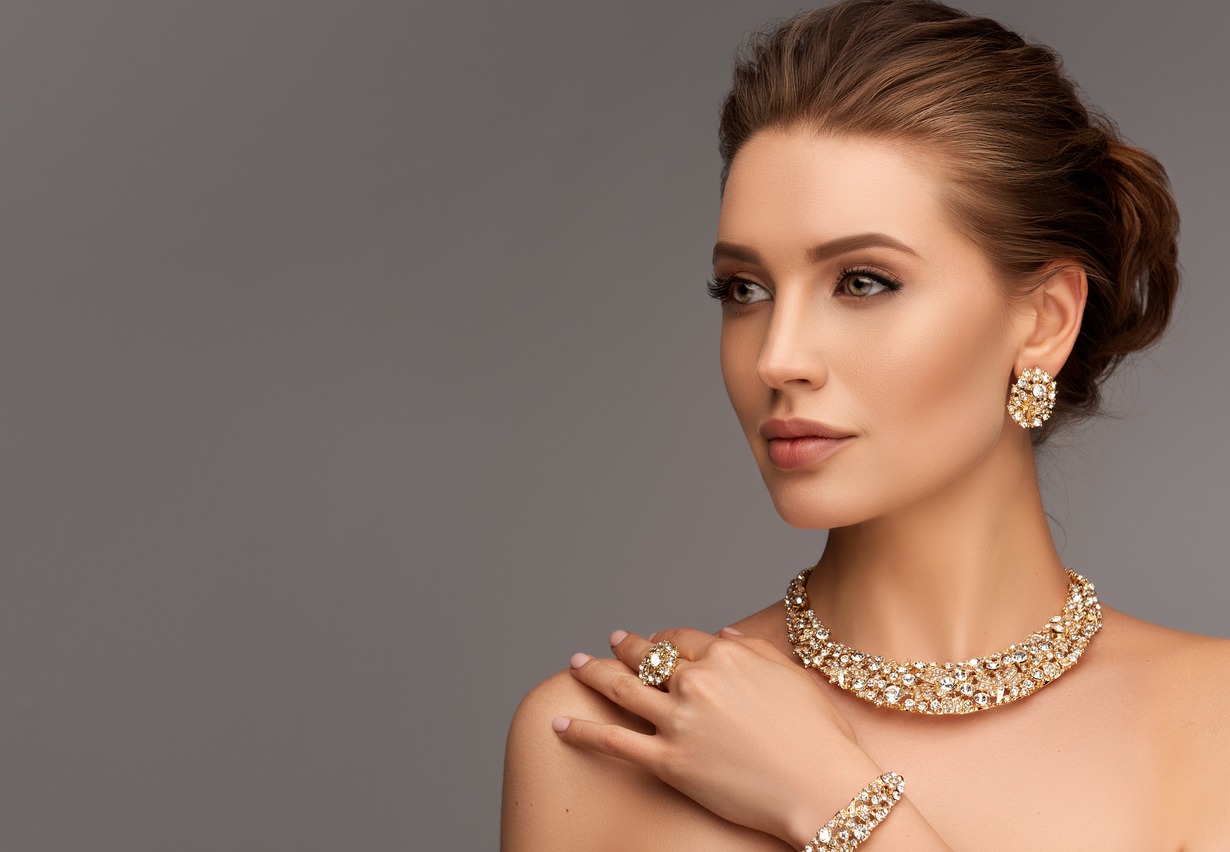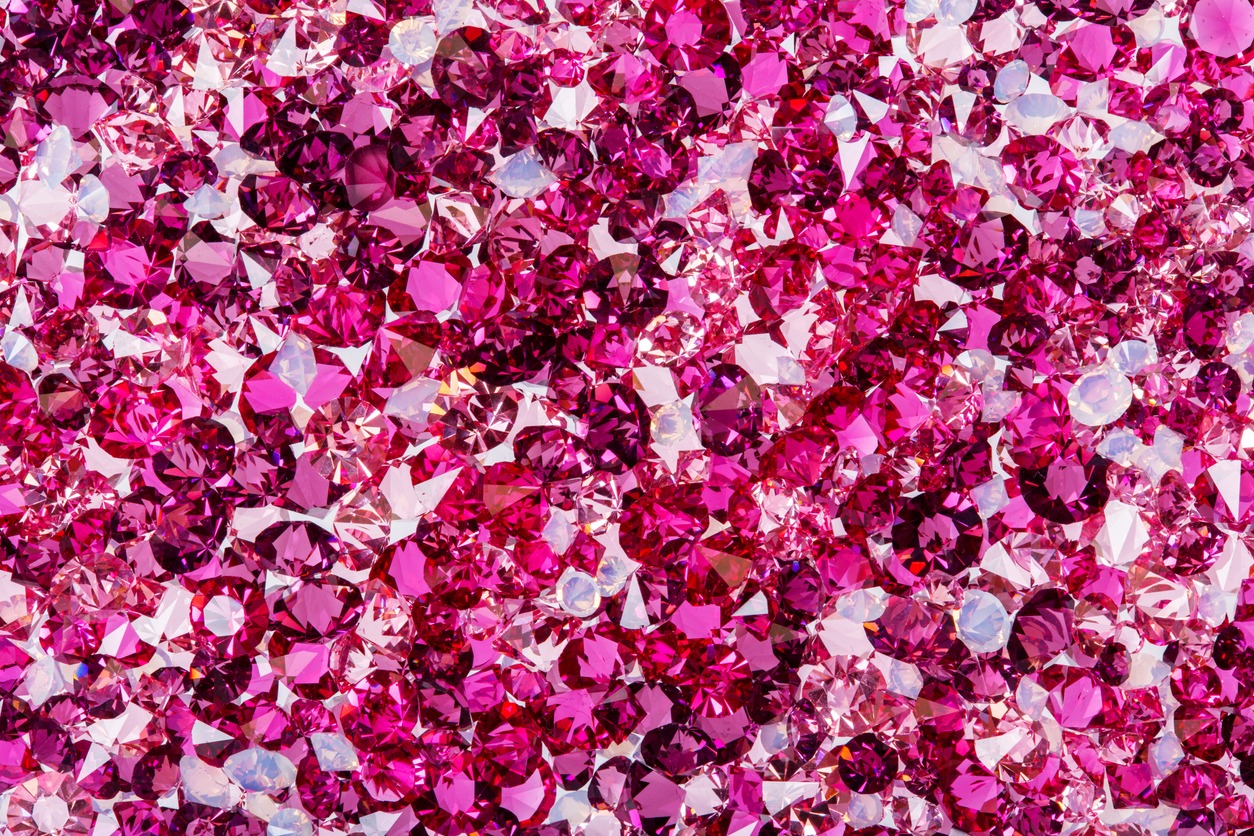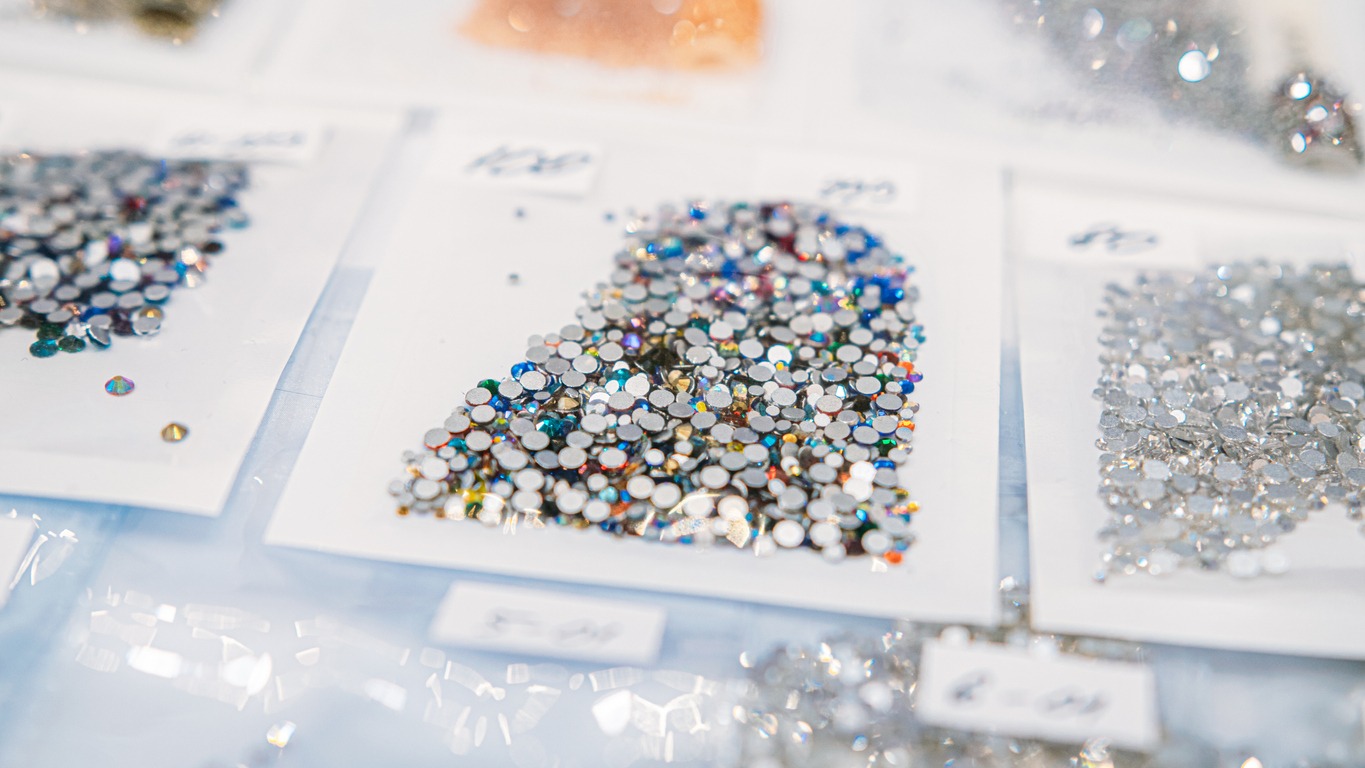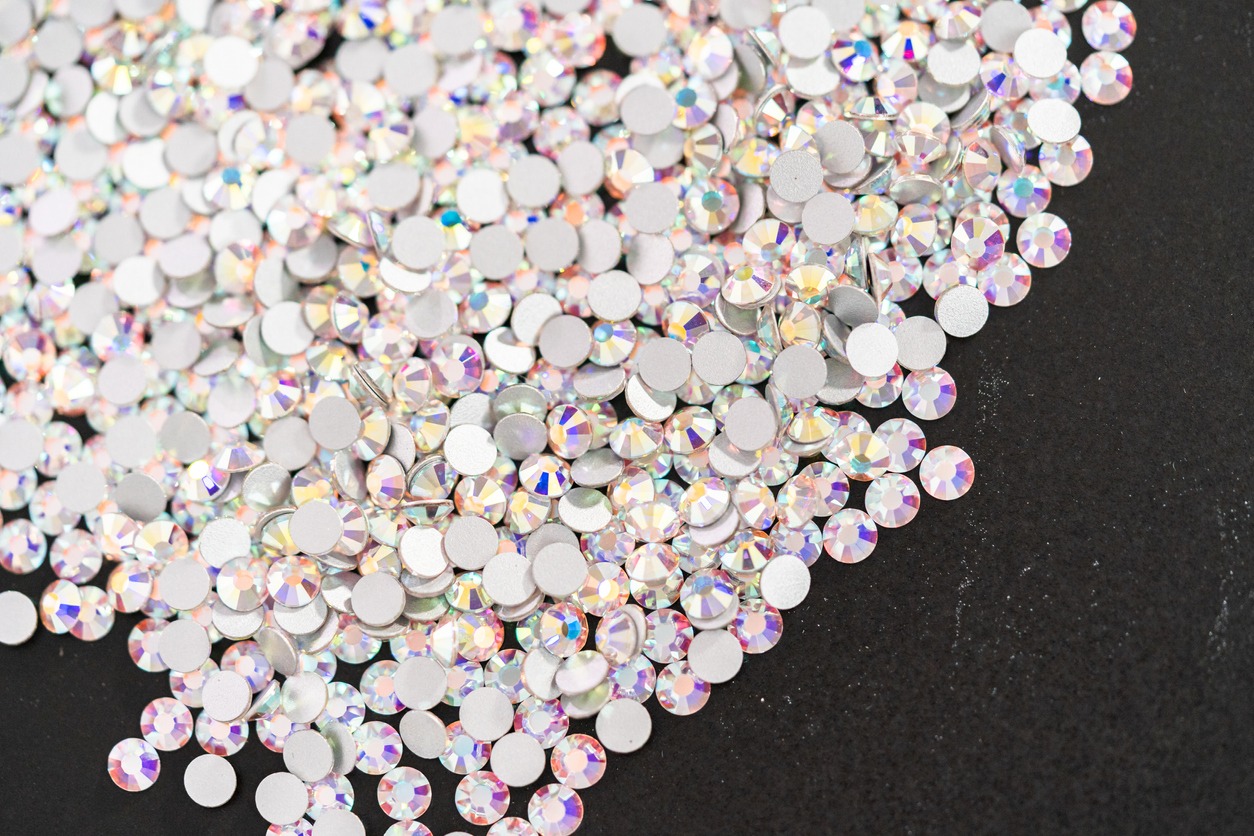Rhinestones can be found all over if you pay more attention to jewelry, luggage, or clothing. Rhinestones are dazzling and enticing, and they work well for adding objects with some glitz. Although they appear to be diamonds, they are not. For jewelry and other uses, rhinestones work well in place of expensive jewels. Rhinestones are considered imitation gems since they are used in jewelry instead of their more expensive counterparts.
What is a Rhinestone?
A rhinestone is an artificial version of a cut and polished gemstone often used in jewelries as a substitute to stone gems.
Rock crystal (stones found in the river Rhine in Europe) is where rhinestones first appeared, according to history . These crystals had the same sparkle and luster as diamonds due to the light refraction they produced. Rhinestone sources were rare due to demand, and synthetically made rhinestones proliferated and took over the market for counterfeit jewelry due to their uncanny ability to mimic diamonds and virtually any gemstone.
History of the Rhinestone
The first rhinestones, also known as diamantes or paste, were created in the thirteenth century from hand-blown Czechoslovakian or Bohemian glass. Later, when rock crystals were found along the Austrian shores of the Rhine River, the term “rhinestone” was coined. Today’s rhinestone shape and appearance are based on these rock crystals since they could be cut and molded to create stunning imitation diamonds. Rock crystals don’t need a backing to provide the shine they are so prized for, unlike modern rhinestones. The crystals’ small imperfections cause the light to reflect off of them and provide the dazzling effect. Resources quickly ran out due to the demand for these natural crystals’ popularity, therefore jewelers looked for ways to make synthetic gemstones that looked like rhinestones.
Georg Friedrich Strass, a French jeweler, discovered in the latter part of the 18th century that glass crystals could be made to look like diamonds or rock crystals by coating the backs of them with metal. The original crystals had metal foil adhered to their backs, but this was later replaced by a metal coating that produced a mirror-like effect. When exposed to light, the mirror backing forced a reflection back through the crystal, producing a brilliant glitter akin to a diamond. Due to the enormous popularity of these fake gemstones, many people in Europe still call rhinestones “Strass” today.
Rhinestones took the next step in their development in the 19th century, when Daniel Swarovski created and patented a method for precisely cutting and polishing glass. Swarovski was able to mass produce extraordinarily high quality crystal glass rhinestones with a significantly higher lead content than other rhinestones thanks to this new technology. Lead is added to crystals to boost their refraction index, which makes them glitter much more than regular glass rhinestones. A 14-facet design known as the Xilion Rose 2028 Cut, which was trademarked by Swarovski in 2004, was later modified at the beginning of 2011. The 2058, a new Swarovski model that replaces the 2028 and has a smaller table and a taller profile, has a greater sparkle rating than the 2028. Today, Swarovski rhinestones are recognized to be the finest available, and as a result, many of the greatest fashion designers in the world use them to accessorize their clothing collections.
Types of Rhinestones
Rhinestones come in a wide range of varieties. Rhinestones made from less expensive materials like plastic and acrylic started to be produced due to their widespread use and appeal, but glass rhinestone usage persisted. We’ll provide you a quick overview of how rhinestones are divided into categories according on their substance, application method, and back.
Rhinestones by Method of Application
- Flat-back rhinestones: These can be purchased either foiled or unfoiled; the unfoiled variety is frequently used for placing crystals into jewelry pieces when it is desirable for light to enter through the crystal. The most common type, foil-backed crystals, may be mounted to almost anything with a little adhesive and creativity.
- Hot stick rhinestones: Similar to foil-backed rhinestones, they have an adhesive backing that is already attached to them. Heat can be used to apply them using an iron without the steam setting or a hotfix applicator.
- Sew-on rhinestones: These have a hole on each side of the crystal and have a similar appearance to flat-back rhinestones. They are easier to remove than rhinestones that have been glued into place and can be embroidered into shoes or garments.
- Claw rhinestones: Rhinestones with a sew-on base are referred to as claw rhinestones or stone in claw settings. Rhinestone mountings and settings are available with both flat backs and pointed backs. The rhinestone will be securely held by the base’s claw. The base of the rhinestone has holes on the back for easy sewing to clothing, footwear, purses, and accessories. When compared to sew-on stones, claw rhinestones are held in place with a metal claw.
- Rim setting rhinestone (sew-on setting): One more group of sew-on-setting rhinestones. The metal rim hugs the edge of the rhinestones and has sew-on holes on the reverse.
- Mounting: The mechanical mounts, which have prongs in the back that can bend over and penetrate through garments to the back of the fabric, are embedded with rhinestones. They are frequently used on footwear and leather goods. There are various mounting styles, such as Tiffany mounts and rim sets.
Rhinestones by Their Backsides
- Pointed Back Rhinestones: The purpose of rhinestones with pointed backs is to mimic the appearance of diamonds. The rhinestones shine even more due to the pointed back, giving them a vivid and sparkling appearance.
- Flat Back Rhinestones: When compared to the same cutting rhinestone with a pointed back, flat back crystal rhinestones will shine less. However, the flatback aspect makes it simple to glue on the embellishments.
Rhinestones by Their Material
- Glass Rhinestones: The glass rhinestones are created by cutting glass with a machine. Glass is transparent in and of itself. Rhinestones are coated with a layer of metal by manufacturers so that light may reflect and make them glitter like diamonds.
- Crystal Rhinestones: A crystal is created when the lead oxide is put to glass. Lead makes the crystal glitter more brilliant and improves color reflection over pure glass. The quality of the crystal increases with lead content. In order for glass to be considered crystal in the US, it must contain at least 1% lead. In order to be considered a crystal in Europe, the lead content must be at least 4%. Swarovski and Preciosa Crystal crystal rhinestones cost more than regular glass rhinestones.
- Plastic Rhinestones: Rhinestones made of plastic are also known as “plastic gems” and “imitation stones.” They are mass produced, inexpensive, lead-free, lightweight, and durable. Plastic rhinestones are perfect for you if you require a lot of rhinestones yet have a tight budget. Acrylic and resin are the two types of plastic used to make stones.
- Acrylic Rhinestones: Mold injection is used to create acrylic rhinestones. The acrylic material is transparent, lightweight, and indestructible. It is also easy to mold. Rhinestones can be made in large quantities in a variety of designs, sizes, and colors.
- Resin Rhinestones: Making resin rhinestones involves pouring resin into a silicone mold. On the stone’s surface, manufacturers can create intricate patterns in this way.
Rhinestones by Their Surface
- Cabochon: The majority of cabochon rhinestones are half circular. In addition, there are drop, oval, and navette shapes. All of the cabochon collections have a variety of unique colors, including opaque and opal tints, pearl effects, and more.
- Chessboard: Rhinestones with checker cutting are called chessboard rhinestones. In addition to the round shape, there are other shapes including oval, navette, and drop.
- Chanton: There are flatback and pointed back Chanton rhinestones available. Each brand has a distinctive cutting style and pattern. cutting such as eight, twelve, fifteen, etc. facets.
- Rivoli Rhinestones: The rhinestone is pointed from both the front and the back. The symmetrical pattern is highly distinctive.
Sizes of Rhinestones
Round rhinestones come in a range of sizes denoted by the letters SS (stone size). SS7 or 7ss, as an illustration. They gauge using millimeters, which correspond to sizes. The size of the stone increases as SS size does. There is no relationship between size and millimeter meaning; a stone marked SS 6 or 6SS is not a stone marked 6mm. Smaller stones produce glimmer, whereas larger stones provide a flash. The range of flat-back crystals is from SS3 (1.4mm) to SS48 (11mm). Only Crystal and Crystal AB are created in or available in some sizes. The measurement for larger gems, sew-on stones, rhinestone forms, and cabochons is millimeters (mm).
Conclusion
Despite the wide variety of rhinestone possibilities, picking the right ones for you is of utmost importance.
For instance, you can select sew-on collections or Hot Fix types if you need them on fabrics. Swarovski will work well if the project is more upscale. Acrylic rhinestones, on the other hand, will be a fantastic option for the budget-conscious mass production project.
Based on how you plan to use the stones, your desired look, and your budget, we advise that you select the rhinestones.







